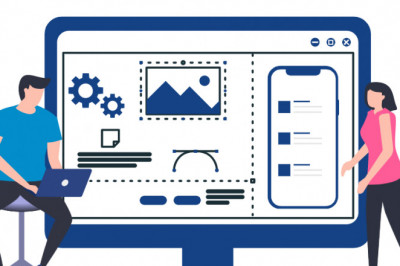views

People have expectations, whether it is shopping, traveling, academics, or anything. They expect it to be good enough for your time, value, and money, and it should be worth it, right. And if the expectations are not met or are out of harmony, customers tend to feel disappointed. Well, it is the same when customers shop, whether it is online or offline. So, when your retail channels are unorganized or out of harmony, your customers feel disappointed. Also, this may make them leave bad reviews or go somewhere else to shop.
After the pandemic, customers’ expectations increased and pressured companies to meet the digital demand. Retailers are proactively working to satisfy customers’ shopping journeys and deliver a consistent brand experience.
Need for OmniChannel Approach
Today, most retail channels are siloed per channel (i.e., multiple channels) rather than unified, integrated channels (i.e., omnichannel). Hence, it creates challenging, inconvenient, and unforgivable customer experiences for online customers, including;
-
Products once purchased online cannot be returned.
-
Seeing a high product difference in the online and in-store products.
-
Pickup orders are not available from the offline stores.
-
Products available in-store are not available in the online stores.
-
Store employees are unable to take orders online.
Creating an Integrated Retail Strategy
Retail needs to shift to omnichannel to blend or harmonize their in-store and online channels in which product movement and customer data are separate and yet organized. To harmonize or blend both the channels and omnichannel model is required that provides centralized product and customer data across all channels. Such a retail model needs an integrated strategy with a seamless integration model.
So, why integration, right? Well, all omnichannel requires harmonized and centralized data. Omnichannel faces various challenges as multiple steps in the customer shopping journey- publicity, pricing, payment, and fulfillment of orders have become decentralized across multiple channels. This decentralization is from many years retailers have been practicing with a diverse and complex digital ecosystem loaded with different data types, multiple data channels, and different target systems and is associated with external partners, such as suppliers and distributors.
Hence, to centralize this multi-layered ecosystem into an omnichannel model, the following features are required for the integration;
-
A single platform that quickly connects all the data sources, applications, and targets.
-
A platform with a massive array of connectors to get acquainted with all data types, protocols, applications, and communication channels, in the cloud or on-premises.
-
A single platform that smartly connects technical and non-technical features and external partners.
-
A platform providing end-to-end visibility of the business for quick response and resolutions.
-
Low maintenance and low code platform that reduces excessive coding charges and saves time to market.
-
An integration framework that smoothly meets the need of today’s and tomorrow’s digital world dynamics (i.e., AI, blockchain, machine learning, etc.)
HubBroker provides the integration platform that retailers need to meet these omnichannel mix requirements. With HubBroker’s Integration solutions, you can guarantee that product and client data streams flawlessly across all blended channels – online and in-store, as a feature of your integral retail system. You can provide a pleasant shopping experience while further developing resource usage and keeping away from clashes between channels that hamper clients’ experience.
With HubBroker Integration, retailers can enjoy the accompanying benefits:
-
Fast and dependable ship from-store satisfaction abilities.
-
Extensive cross-stage integration to back-end frameworks (orders, warehouse, transportation, inventory management, and so on).
-
Improved data visibility and monitoring of your business transactions.
-
Decreased integration costs.
Connect with us today to learn more about our seamless integration solution that can help you accelerate your business.












